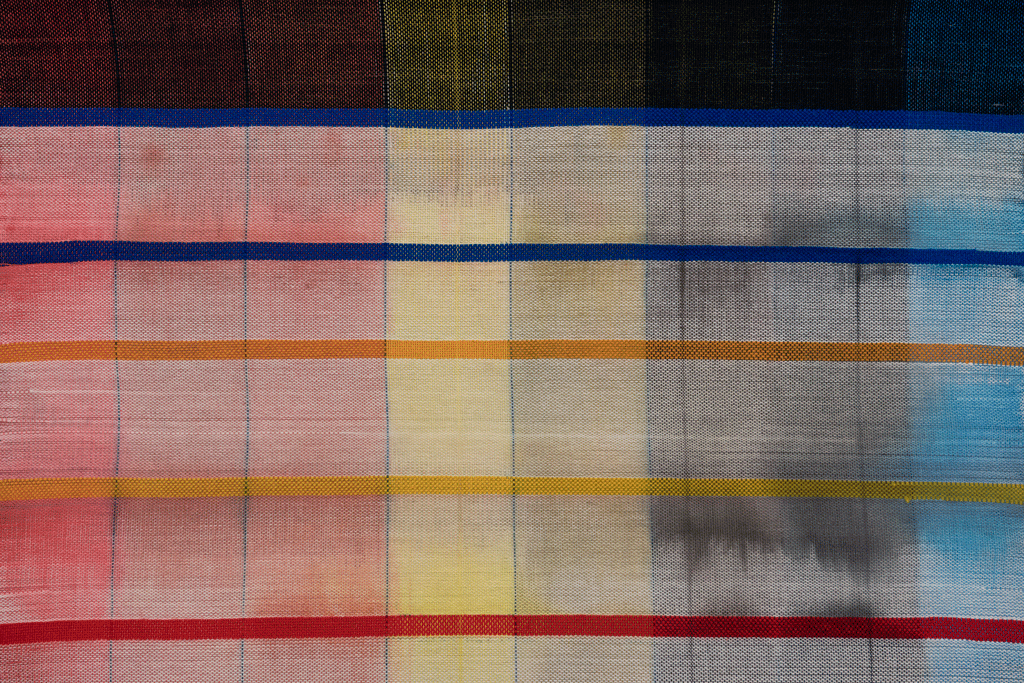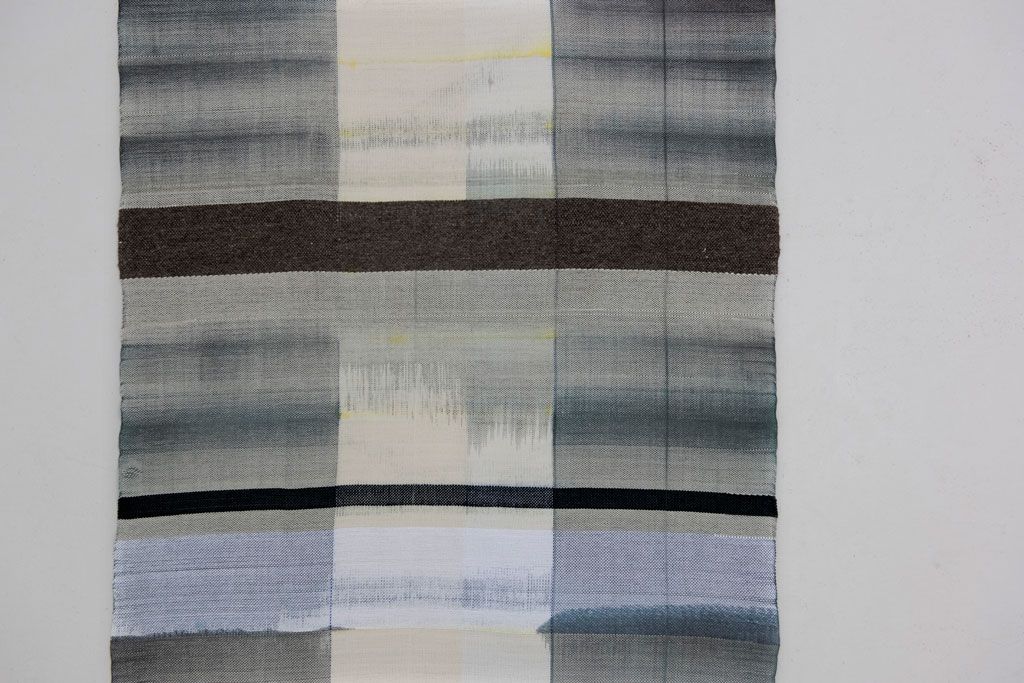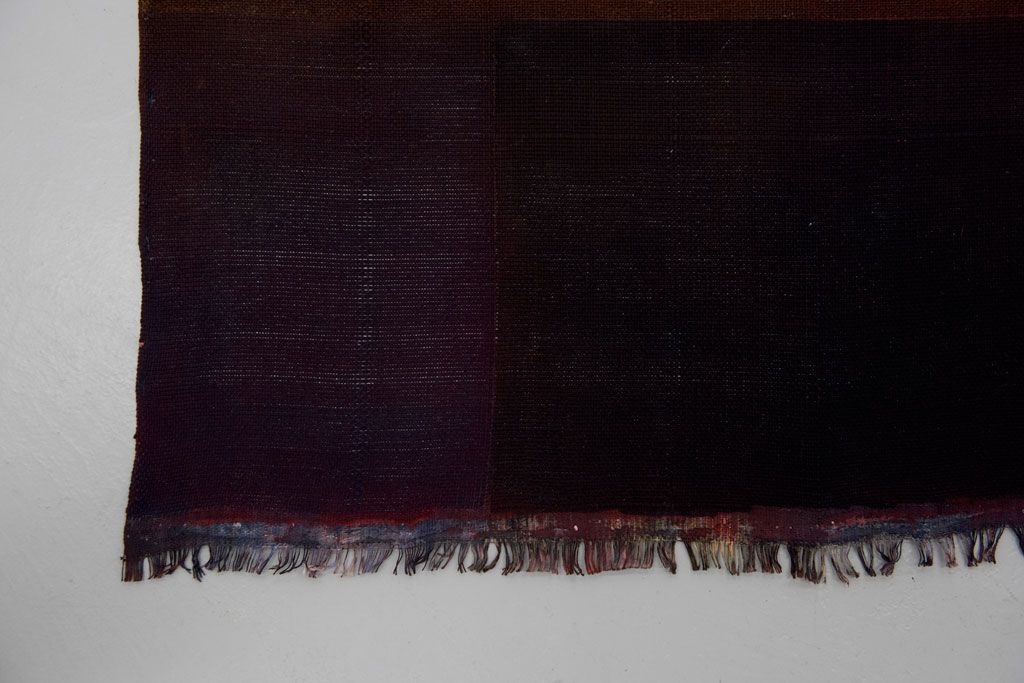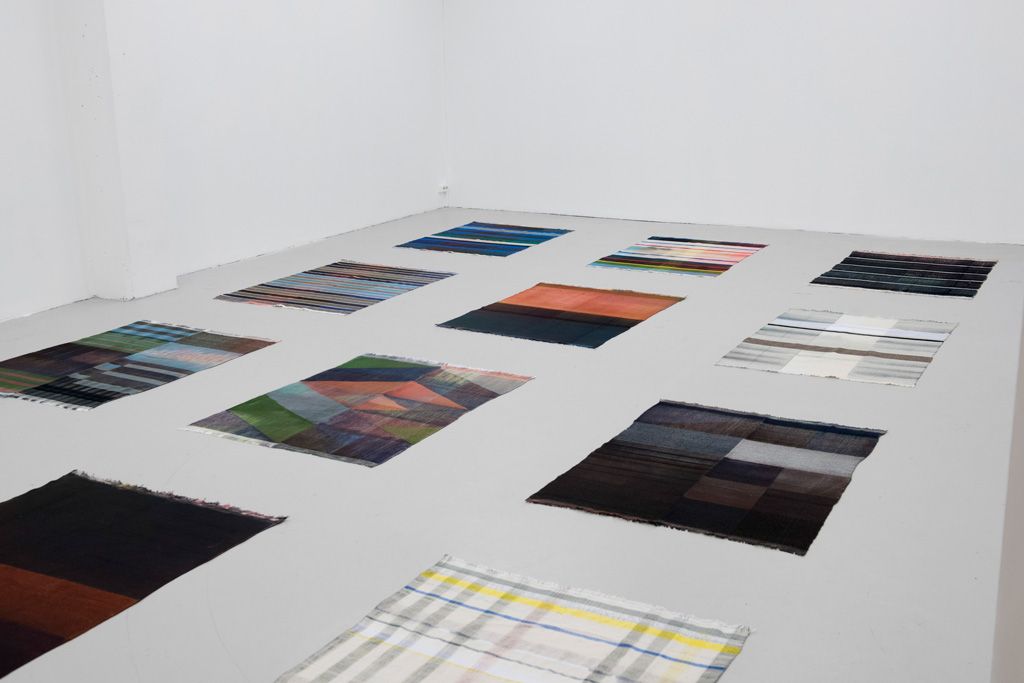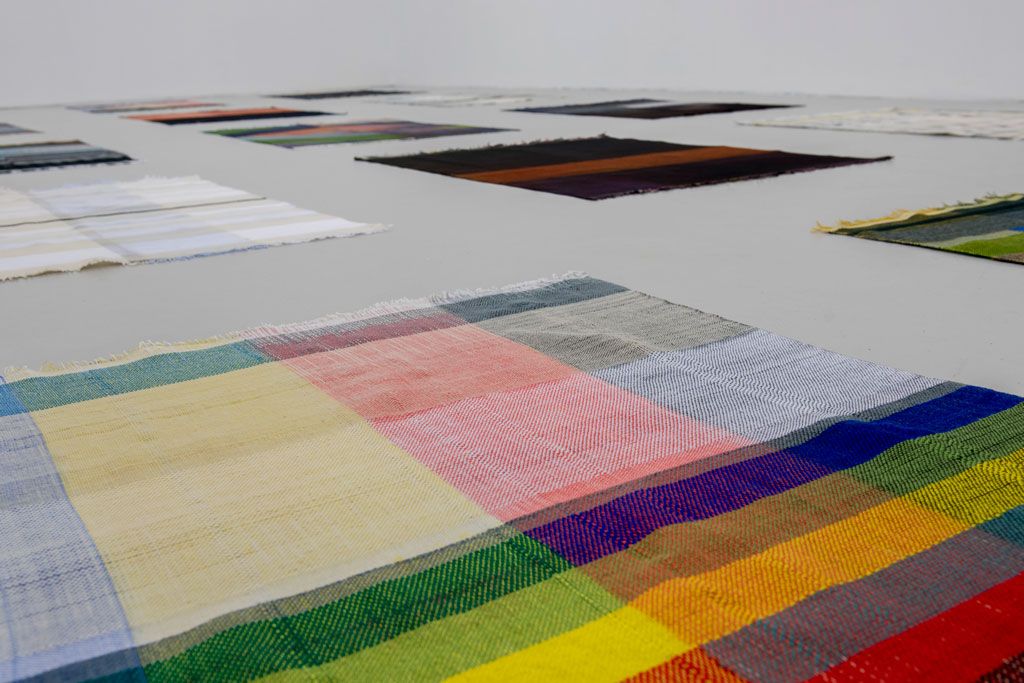The entire floor at Prosjektrom Normanns is covered with 15 hand-woven rugs or carpets, each covering approximately one square meter each. They are placed systematically in a grid pattern with just enough room for a person to walk between. I immediately associate them with tablecloths my aunt uses on the dining table at home. What look like carpets or fabrics at first glance turns out to be impressive paintings, drawing parallels between textile arts and the woven surface of the canvas and pointing to the very fine line between definitions. Glabush works intuitively in a variety of media including painting, drawing, sculpture, ceramic and printmaking, but continually revolves around themes such as identity and spiritual dimensions from an intellectual standpoint. This exhibition consists solely of canvases that he created thread by thread and then painted, dyed, or otherwise manipulated. In the pamphlet for the exhibition, the artist himself writes:
paintings are like windows
but seen as objects they become stopped
moving from something transparent to something static:
A window to a door
Different Categories
Glabush elaborates further as he talks about the exhibition, and refers to the quattrocento painting of 15th century Italy. At that time one saw painting as a window into our physical wold. The painting was considered perfect when it was an imitation of the real world. As abstract paintings on the floor in this exhibition, they are also objects that can take on different contexts. Glabush compares them with doors; behind the door, anything can appear. In the context of this gallery space, it may be interpreted in such a way that these works do not necessarily belong solely in the category of object, but rather flow into several labels like painting, carpet, cloth, mat. The energetic colours of abstract, systematic patterns run the full colour-spectrum and create a vivid atmosphere in the project room’s white cube that creates a modernist impression. Thin threads of cotton, linen and wool are woven together in various proportions, and the weaving technique is not mastered all that well – but that seems to be beside the point. The weaving is skewed and holed in several places, but these errors create character and lend a rustic feeling to the artwork. I find myself wondering what it would be like to see the works displayed in a more "airy" arrangement; the canvases are so thin that light could easily pass through, which is not the impression given when arranged on the floor.


